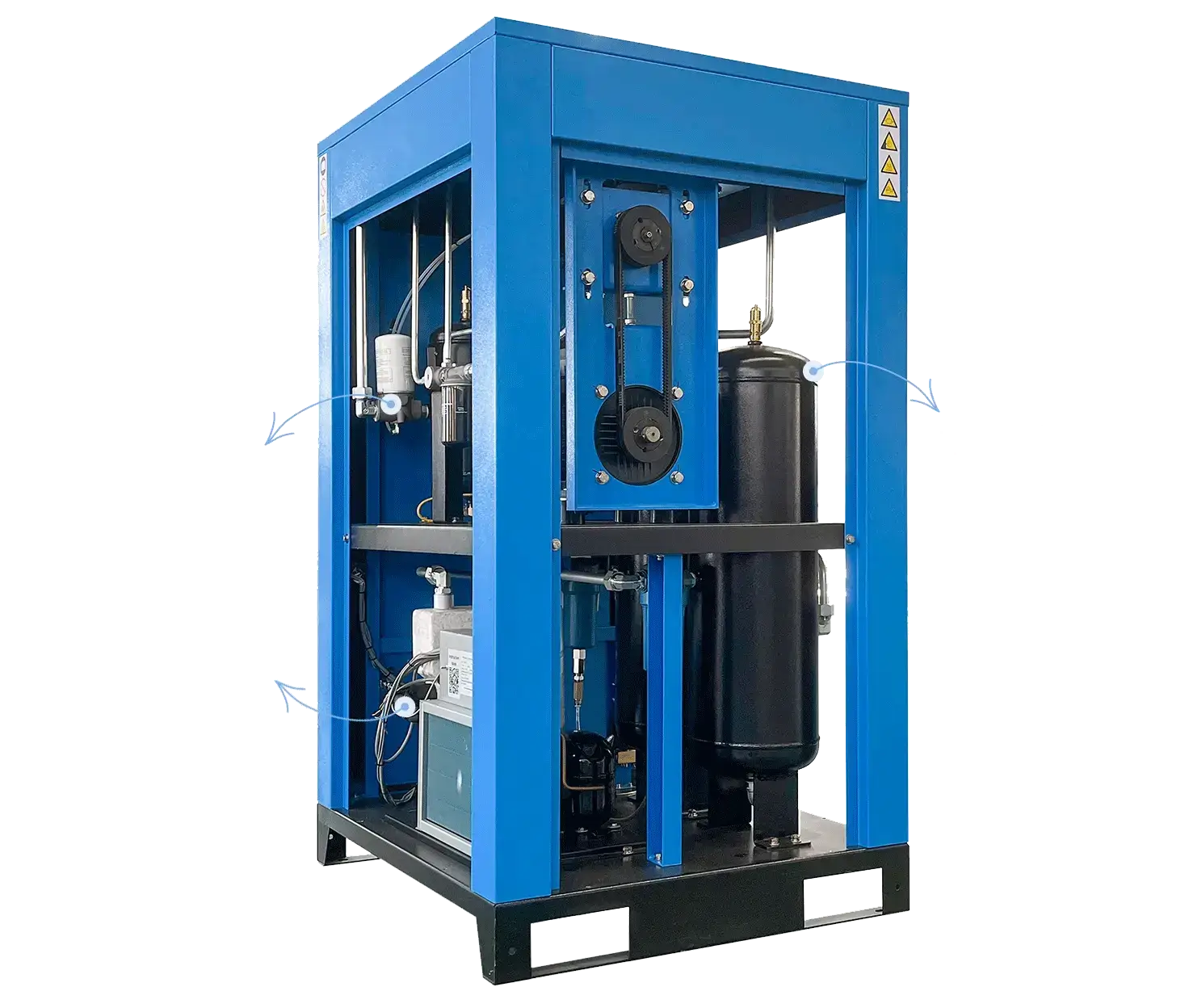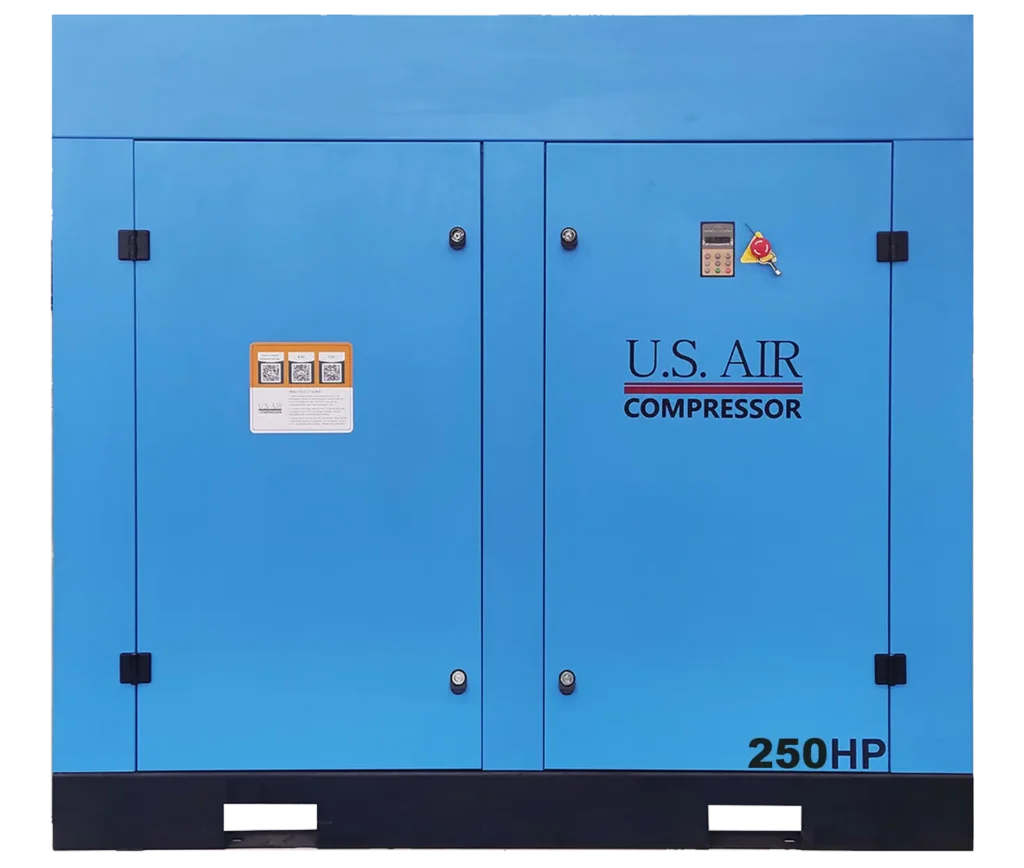A Comparison of Rotary and Reciprocating Compressors

Compressors are vital machines in numerous industries, serving essential roles in processes that require pressurized air or gas. When selecting a compressor, businesses often encounter two popular options: rotary compressors and reciprocating compressors. Each of these systems offers distinct advantages that cater to specific applications and operational requirements.
If choosing between these two options has you feeling uncertain, this guide provides a detailed comparison of rotary compressors and reciprocating compressors to help you make an informed decision.
How Rotary Compressors Work
Rotary compressors operate on a simple yet efficient mechanism. They use rotating elements, such as screws, vanes, or rollers, to compress the air. Among rotary compressors, rotary screw compressors are particularly common.
The rotary compressor process begins with air entering the compressor’s chamber. Inside the rotor chamber, two rotating screws are placed closely together. These screws trap incoming air, reducing its volume as they rotate. This reduction in volume forces the air to compress, increasing its pressure. The compressed air is then pushed into an output system, ready for use.
Rotary compressors are designed for continuous operation, making them ideal for tasks that demand a constant supply of pressurized air.

How Reciprocating Compressors Work
Reciprocating compressors utilize a piston-cylinder assembly to compress air. This system functions similarly to a combustion engine.
The reciprocating compressor process begins with air being drawn into the cylinder during the intake phase. A piston, driven by a crankshaft, moves within the cylinder, compressing the trapped air as the piston travels upward. Once the air is pressurized to the appropriate level, it is discharged through an outlet valve.
Reciprocating compressors operate in cycles, consisting of intake, compression, and discharge. They are typically used for intermittent rather than continuous air compression.

Compressor Output and Efficiency
One critical factor to keep in mind when selecting a compressor is how well it will perform under your required conditions.
Rotary compressors generally offer higher efficiency in continuous operations. Their streamlined design enables consistent output with minimal fluctuations, making them reliable for high-demand environments. Additionally, rotary compressors often include built-in cooling systems, which help maintain operational stability even under prolonged workloads.
Reciprocating compressors provide excellent efficiency for lower-demand or intermittent applications. However, they can experience efficiency losses in continuous use due to heat generation and wear on moving parts, which may necessitate frequent maintenance or downtime.
Space and Maintenance Considerations
Another important factor to consider is how these compressor types differ in terms of size and upkeep.
Rotary compressors are designed to be compact and space saving. Their straightforward internal mechanisms minimize the number of moving parts, reducing the likelihood of mechanical failures. This means rotary compressors demand comparatively less maintenance over time, translating into fewer operational interruptions and lower maintenance costs.
On the other hand, reciprocating compressors tend to be bulkier due to their piston-cylinder mechanisms. They require more regular maintenance, as the nature of their design involves components that experience wear and tear, such as pistons, rings, and valves. It’s important to allocate resources for upkeep when opting for a reciprocating compressor.
Noise Levels and Operating Environment
The operating environment plays a significant role in determining which compressor type aligns with your requirements.
Rotary compressors are recognized for their quieter operations. The enclosed and efficient design of the rotating mechanisms significantly reduces noise levels, making rotary compressors suitable for environments where minimal noise is essential, such as hospitals, laboratories, or offices.
Reciprocating compressors, in contrast, generate higher noise levels due to their piston-driven functionality. While they perform exceptionally in rugged or industrial settings, their noise output can pose challenges in noise-sensitive environments. Therefore, housing reciprocating compressors in sound-proof or isolated settings might be necessary.
Applications and Industry Use
Rotary and reciprocating compressors cater to distinct applications, shaped by their operating capabilities.
Rotary compressors excel in industrial and commercial applications that require uninterrupted operation. Common applications include manufacturing, food packaging, and automotive assembly lines. They are also favored in various sectors that require air compressors with continuous pressurized air delivery.
Reciprocating compressors, on the other hand, are ideal for smaller-scale or specialized applications where an intermittent air supply is sufficient. Examples include service stations, HVAC systems, and construction sites. Industries requiring high-pressure outputs, such as oil refineries, often prefer reciprocating compressors for specific tasks.
Reliability and Durability
Reliability and durability are crucial elements to keep in mind when investing in a compressor system, particularly for demanding business operations.
Rotary compressors stand out for their robustness and consistent performance over extended periods. Their simpler design reduces the risk of mechanical faults, making them more dependable for mission-critical tasks.
Reciprocating compressors can also be highly durable, but they do require more vigilance in terms of maintenance. Their reliability is contingent upon routine care and promptly addressing issues like overheating or wear and tear to extend their operational lifespan.
Cost Considerations
Cost is often a deciding factor when selecting between rotary and reciprocating compressors.
Rotary compressors have a higher initial cost due to their advanced design and enhanced features. However, they can provide better cost efficiency over time through lower maintenance requirements and energy savings in high-demand environments.
Reciprocating compressors generally come in at a lower purchase price, making them an attractive option for businesses with various budget constraints. Nevertheless, their ongoing maintenance needs and operational costs may accumulate over time, especially in applications that require frequent use.
Investing in Long-Term Compressor Solutions
Comparing rotary and reciprocating compressors equips you to make an informed choice that aligns with your operational requirements. By evaluating factors like efficiency, durability, application suitability, and cost, you can select the right system to ensure consistent performance and productivity.
Whether you’re designing an industrial setup or managing a smaller-scale operation, choosing the appropriate compressor can significantly impact your business’s efficiency and reliability. Carefully explore your options, and don’t hesitate to consult experts like our team at US Air Compressor for personalized guidance.
Proper compressor selection is an investment in your operation’s processes and productivity. Make the most of it by making an informed choice.






